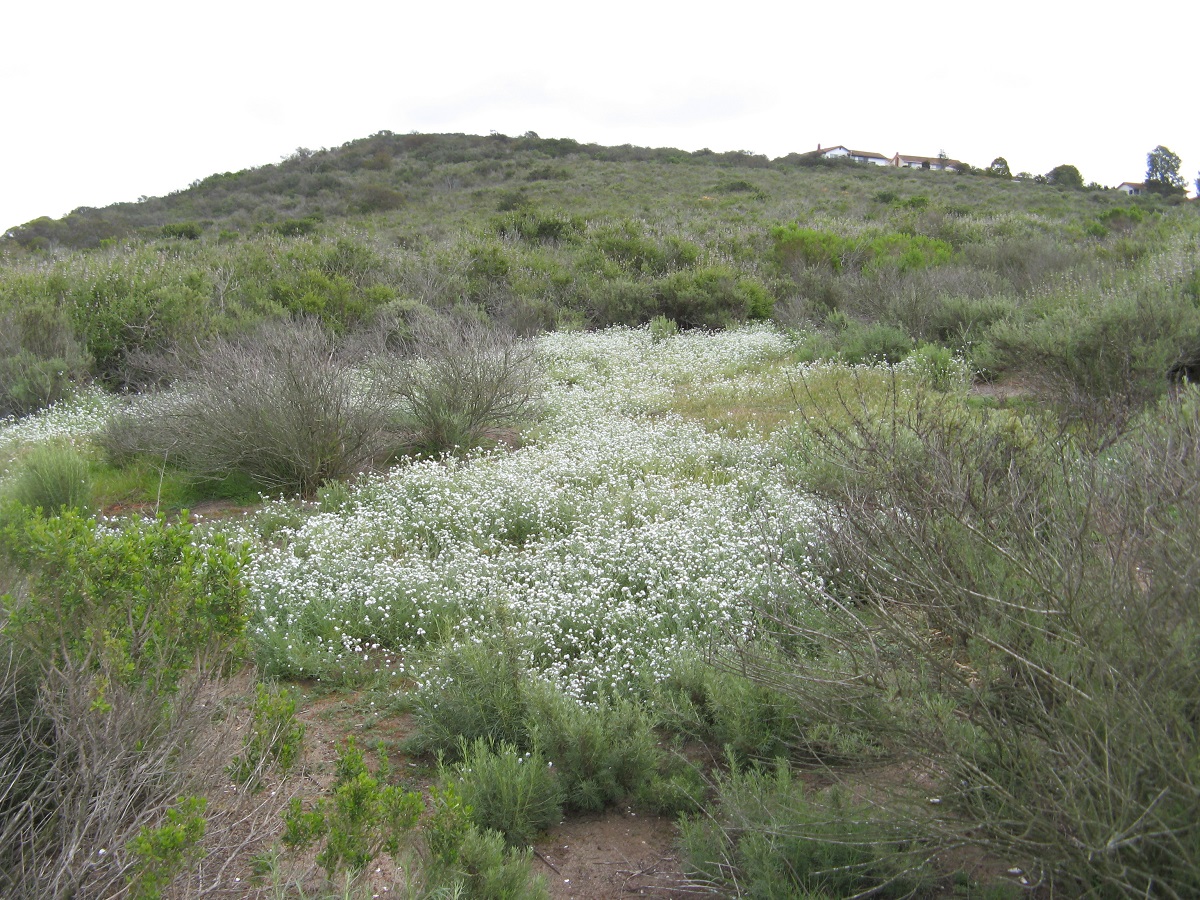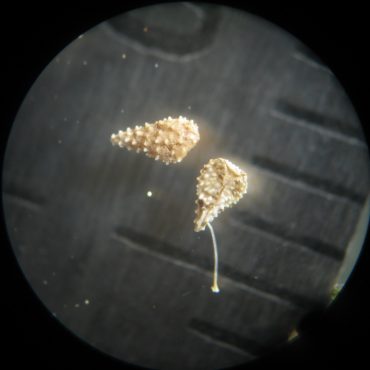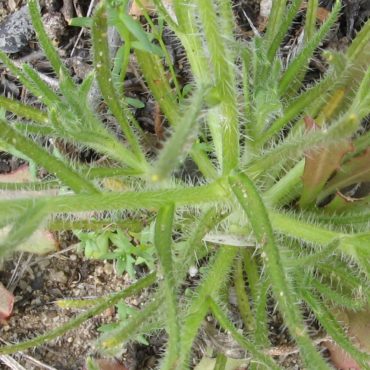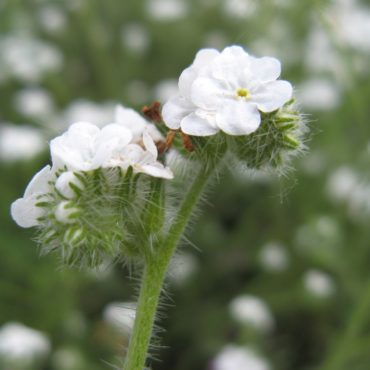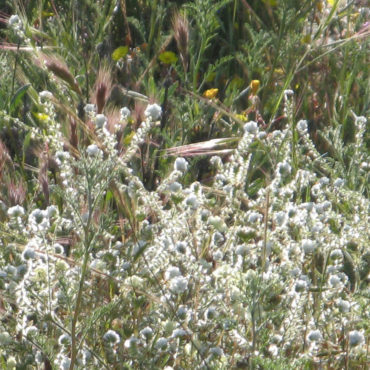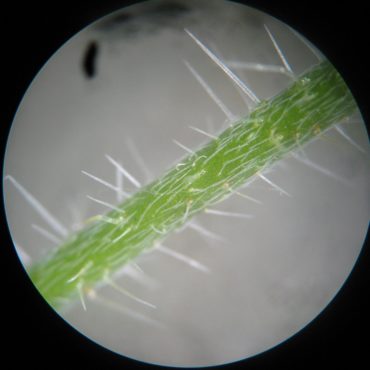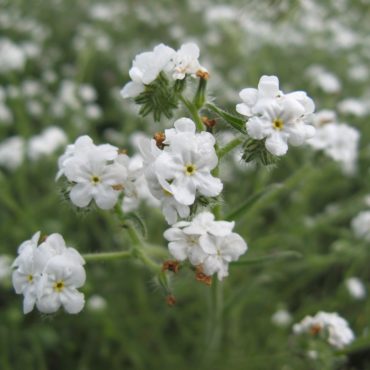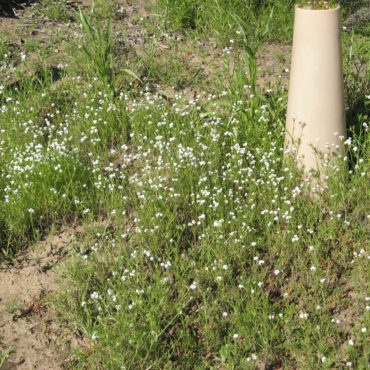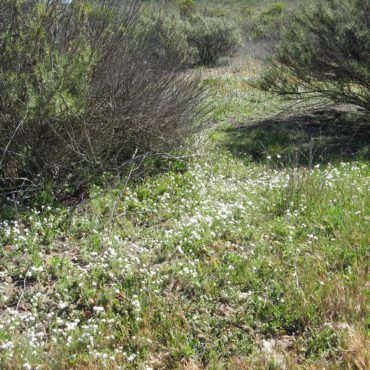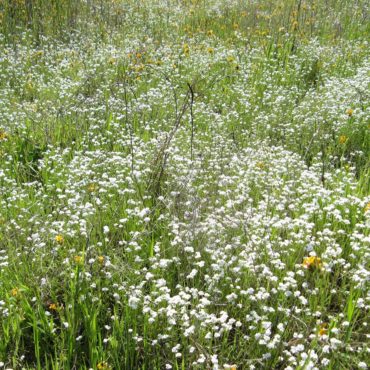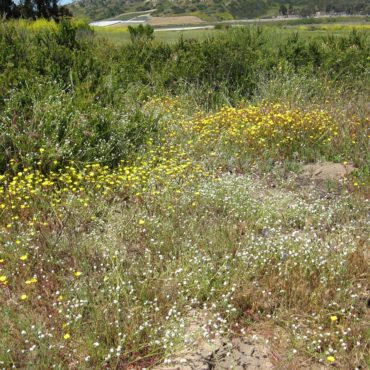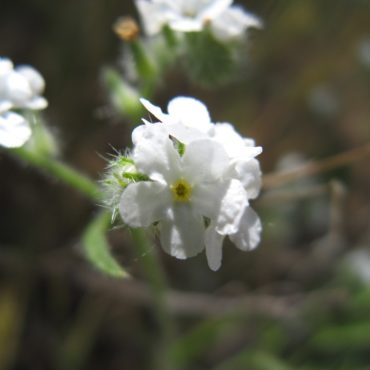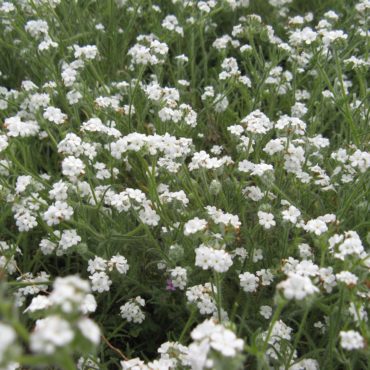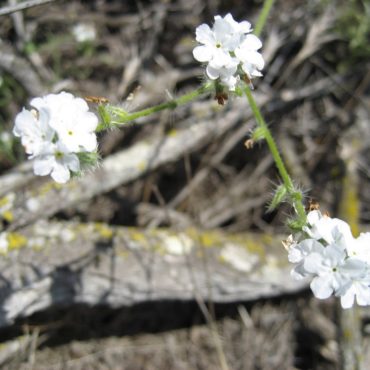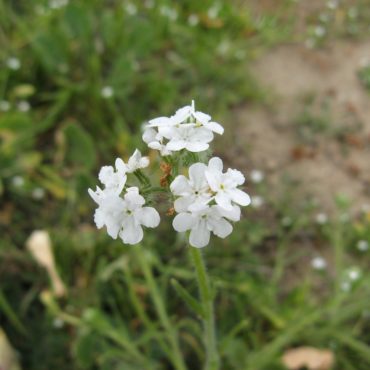Common cryptantha is one of several species often referred to as popcorn flowers.23,473 It is a low growing, gray-green annual, erect or spreading to two feet (60 cm) in height. The leaves are linear to narrowly ovate, up to 2 inches (5 cm) in length, sessile and sparse along the stems. Stems and leaves are covered with long, stiff, erect hairs and finer hairs laying flat against the stem called “setose” hairs. (Two references specify an absence of setose hairs as a characteristic distinguishing common cryptantha in the Santa Monica Mountains from other species,3,4 but this conflicts with the description of Jepson2 as well as with our San Elijo Reserve specimens and may be a local variation.)
Flowers are born along one side of a terminal stalk that is initially tightly coiled, (scorpioid), unfurling as the buds mature and resembling a fiddleneck. Flowers open near the top of the coil, and seeds develop below along the elongating stalk. The clusters generally occur in pairs or groups of three. Flowers are radially symmetrical and bisexual. There are five sepals that are fused at the base with five linear lobes covered with dense hairs. The white flowers are short-trumpet shaped, with five rounded lobes. The corolla is constricted at the top of the throat by five small appendages that range in color from from white to bright yellow. There are five stamens and a single pistil. Neither project from the throat and so are difficult to observe. Plants bloom March through July, earlier when winter rains come early.
The sepals persist around the developing fruit, lining the elongating post-flower peduncle. Fruits are small nutlets (one seeded fruits that do not open). Fruits are triangular-ovate (somewhat like a bicycle seat), less than 1/8 inch (2 mm) long, shiny brown, with the surface covered with minute bumps and a distinct groove on the underside.

